Class Strophomenata Williams et al 1996
Order Productida Sarycheva and Sokolskaya 1959
Family Linoproductidae Stehli 1954
Genus Linoproductus Chao 1927
Three species of Linoproductus Chao 1927 are available in the rocks of the Brush Creek limestone in Parks Township, Pennsylvania. Species include L. meniscus Dunbar & Condra 1932, L. platyumbonus Dunbar & Condra 1932, and L. prattenianus Norwood and Pratten 1855. The genus has two defining features. First, all have fine, even but often wavy, non-reticulated costae that traverse the thin shell. Second, when mature, they are relatively large.
The ventral (pedicle) valve is strongly convex, but this condition varies across species. Some species exhibit a long “tail” of growth extending from the anterior margin of the ventral valve. The dorsal (brachial) valve is much smaller and flat to concave. The hinge connecting the two is straight and short, rarely exceeding the greatest width of the shell.
The ventral valve ears feature wrinkles that disappear on the posterolateral slopes. Species can have as many as two rows of spines on the posterior margins of the ventral valve, and as many as a dozen spines on the valve face itself. When a spire appears, the costae typically branch off into a pair. These spines helped cement the brachiopod to the substrate on which it spent most of its life attached.
These brachiopods are absent from the Pine Creek limestone in Kittanning, but the locality lacks large brachiopods. In the Brush Creek of Parks Township, they are exceedingly common. The limestone’s non-fissile and high calcite content means I extract nearly all shells in two pieces, with half or more of the laminate shell remaining as a mold. The dorsal valve is rarer to uncover due to its slightly concave nature. Most shells retain both values. Most interior features are hidden.
Species L. meniscus Dunbar & Condra 1932
Large, broad umbo, less inflated. As wide as long. The dorsal valve is gently concave, forming a shallow body chamber. Flattening of the anterior slope presents a low fold on the dorsal valve. There are a few small spines, Double rows on the ears, about a dozen on each side—strong wrinkles on the ears that disappear early on the posterolateral umbo slope.
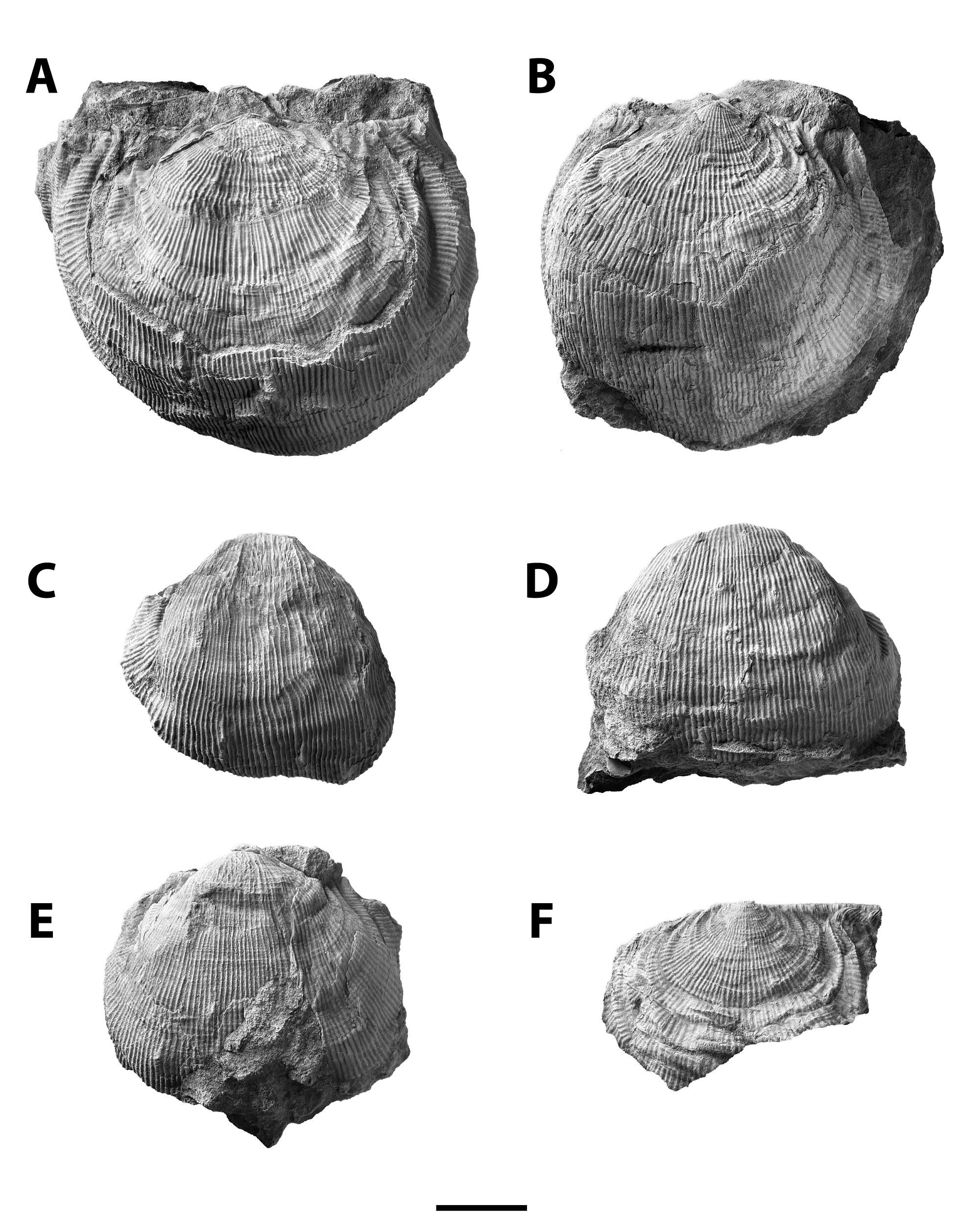
Species L. platyumbonus Dunbar & Condra 1932
Large, inflated umbo that projects over the hinge line. It was an elongated ventral valve in mature specimens, with a tail forming past the anterior margin. The shells are longer than they are wide. The dorsal valve is gently concave and sharply bent where the tail forms. The ventral valve has heavy wrinkles on the ears. Ventral valve spines, fewer than a dozen.
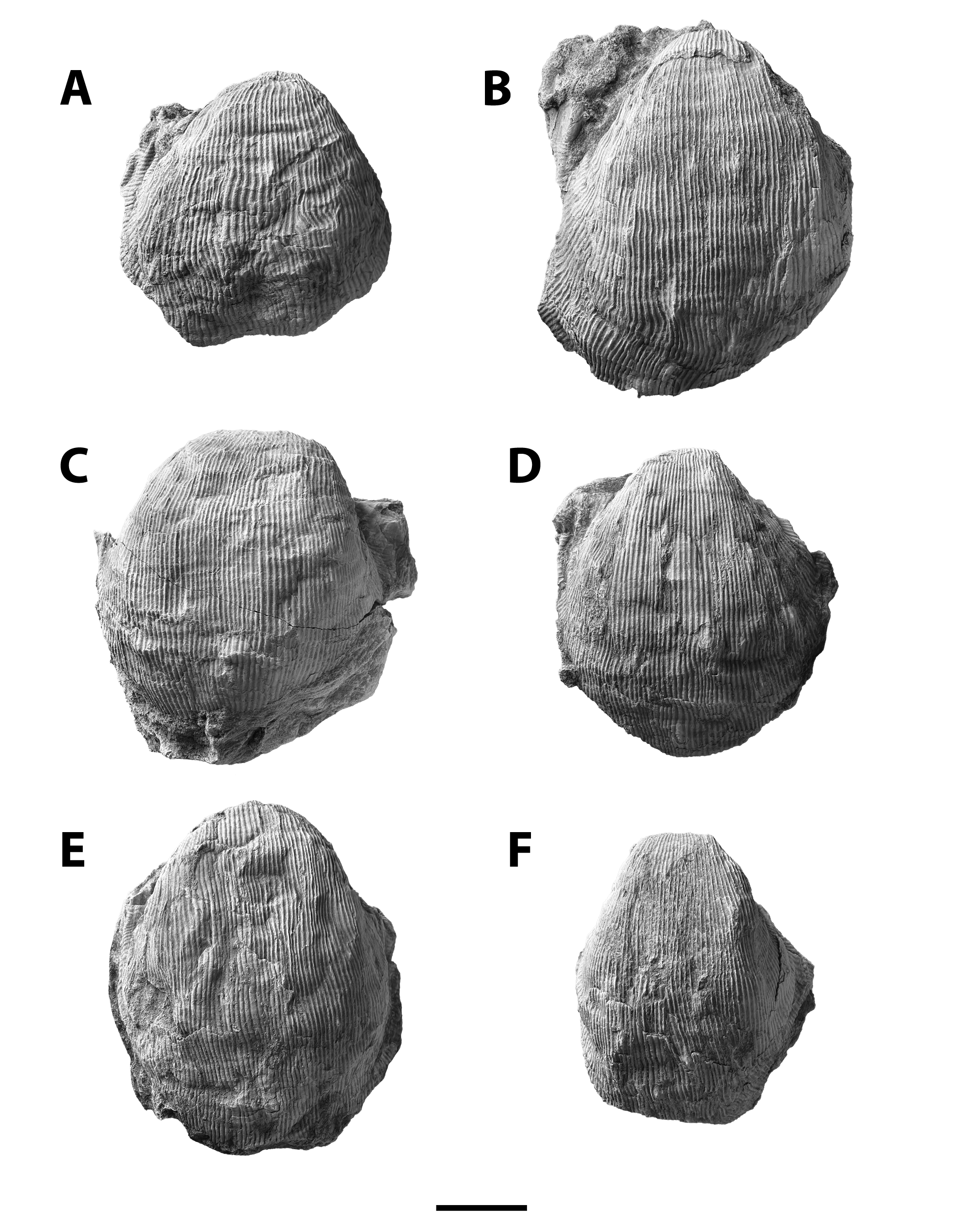
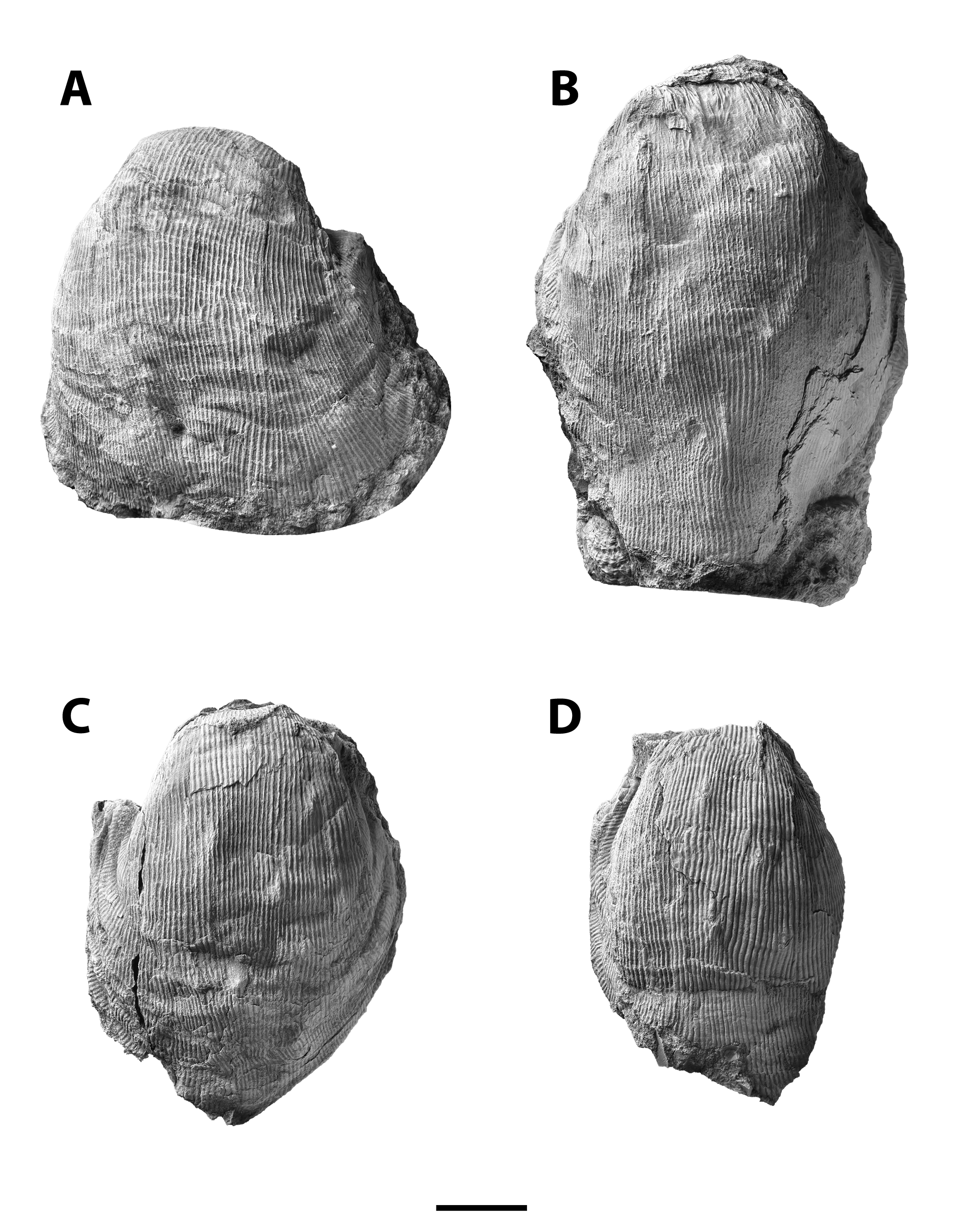
Species L. prattenianus Norwood and Pratten 1855
The shell is medium in size, typically wider than it is long. The ventral valve features large, flat, strongly wrinkled ears with a double row of spines. The umbo is rounded and underinflated. Ventral valve spines are abundant and form a detectable pattern.
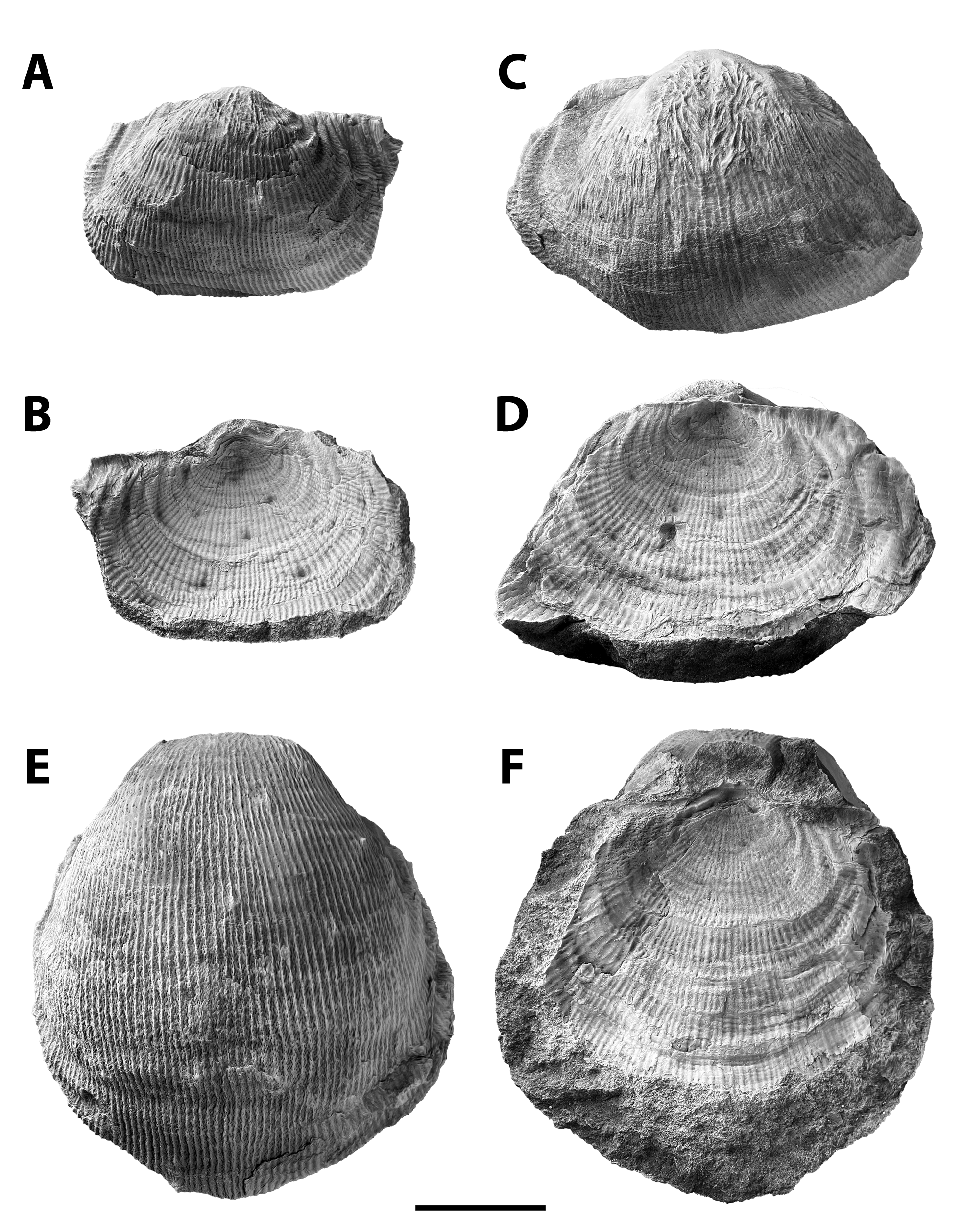
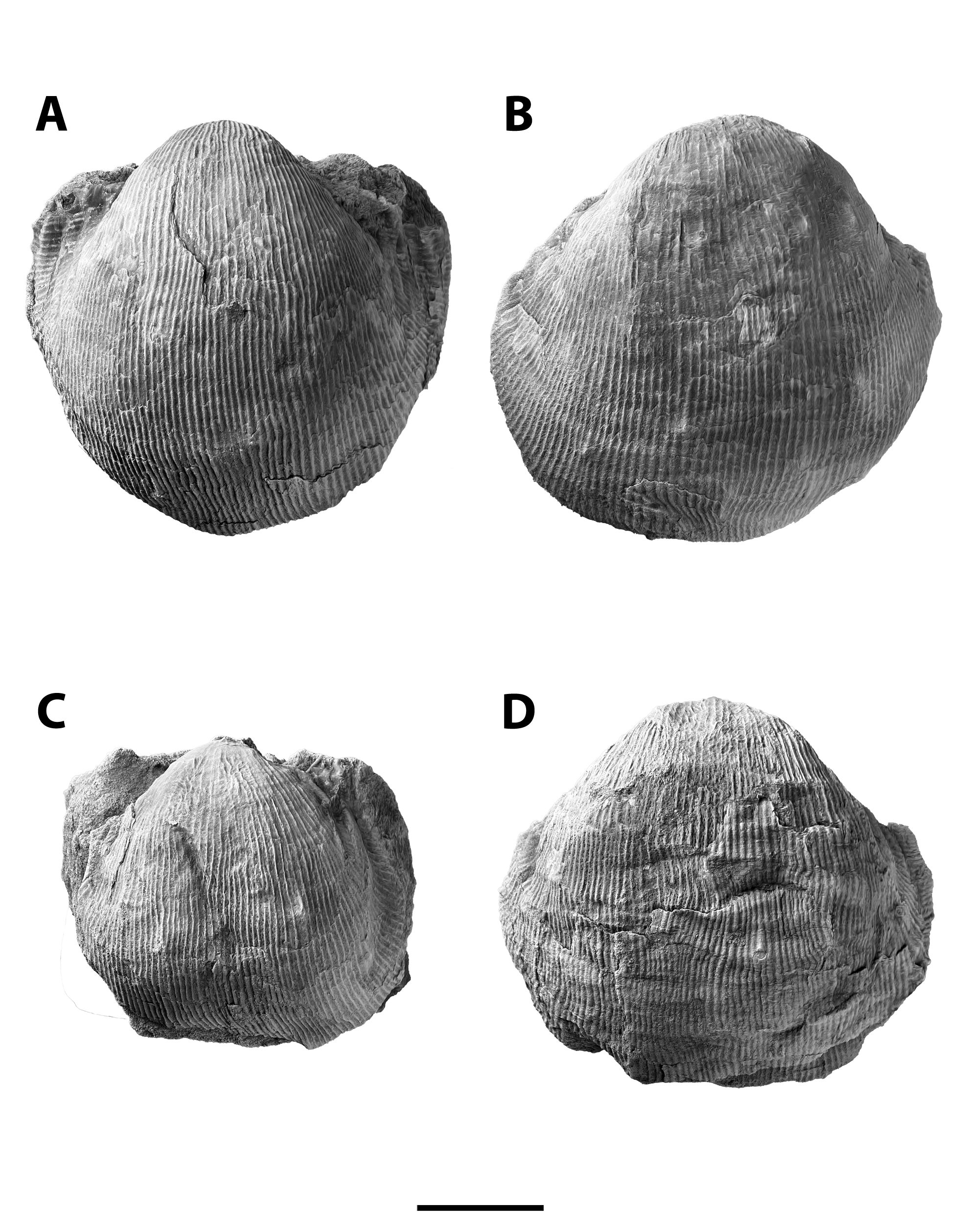
Fig. 5.— Linoproductus prattenianus from the Brush Creek limestone at SL 6533; A, CG-0775; B, CG-0777; C, CG-0778; D, CG-0773; Scale bar = 1 cm.
References
- Chao, Y. T., 1927. Productidae of China Part 1: Producti. Palaeontologia Sinica, Series B 5(2):1-244
- Dunbar, C. O., Condra, G. E., 1932. Brachiopoda of the Pennsylvanian System in Nevada Bulletin 5, Second Series, 377 p.
- Norwood, J.G., and Pratten, H., 1855. Notice of fossils from the Carboniferous Series of the western states belonging to the genera Spirifer, Bellerophon, Pleurotomaria, Macrocheilus, Natica, and Loxonema, with descriptions of eight new characteristic species. Journal of the Academy of Natural Sciences of Philadelphia 3:71-77
- Sarycheva, T. G., and Sokolskaya, A. V. N., 1959. O klassifikatsin lozhnoporistykh brakhiopod. Akademiia Nauk SSSR Doklady, 125: 181-184. (In Russian)
- Stehli, F. G., 1954. Lower Leonardian Brachiopoda of the Sierra Diablo. Bulletin of the American Museum of Natural History 105(3):257-358
- Williams, A., Carlson, S., Brunton, C. H. C., Holmer, L. E., & Popov, L. E., 1996. A supra-ordinal classification of the Brachiopoda. Philosophical Transactions of the Royal Society, Biological Sciences, 351: 1117–1193.

Late Carboniferous Fossils from the Glenshaw Formation in Armstrong County, Pennsylvania
Preface | The Photographic Process
Localities: Locality SL 6445 Brush Creek limestone | Locality SL 6533 Pine Creek limestone
Bivalvia: Allopinna | Parallelodon | Septimyalina
Cephalopoda: Metacoceras | Poterioceras | Pseudorthoceras | Solenochilus
Gastropoda: Amphiscapha | Bellerophon | Cymatospira | Euphemites | Glabrocingulum | Meekospira | Orthonychia | Patellilabia | Pharkidonotus | Retispira | Shansiella | Strobeus | Trepospira | Worthenia
Brachiopoda: Cancrinella | Composita | Isogramma | Linoproductus | Neospirifer | Parajuresania | Pulchratia
